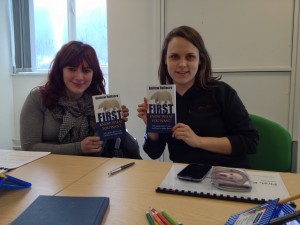 Ville Miettinen via Compfight
Ville Miettinen via Compfight
Extract from NLP: The Essential Guide available at Amazon now. More details below.
Day 1: Finding Your Current Coordinates
In order to achieve anything, you need to know where you want to go, right? It’s also critical to know where you are now so you can plot a course from here to the fulfillment of your dreams.
Almost all of us, probably without ever really thinking about it, have divided our lives into what we like and what we don’t like. NLP cofounder Richard Bandler remarked that while we’re clear about what we like and don’t like, we probably haven’t noticed that we can subdivide our likes and dislikes into the things we like or want, but don’t have – for example, a new car, a vacation or a promotion – and the things we don’t like or don’t want and have – like too many pounds, a quick temper or badly behaved pets.
To begin, consider what you really like about your life. These can be significant achievements – like hitting a home run, receiving your first “A”, or getting an important promotion, and they can also be the simplest of moments – listening to the sound of waves, watching a child sleep, savoring chocolate ice cream. Make your list as long and full as your time allows. To simplify this process, you can use the worksheet on the next two pages. For now, just complete column 1, indicating the things you want and have in your life.
Now to the more expected question: What do you have that you don’t want in your life? Many of us spend a lot of our lives on this question in one form or another. As you consider this question, feel free to include those extra pounds, troublesome habits, being stuck in traffic, days your boss is a jerk, or whatever it is that “rains on your parade”. Complete column 2 of your worksheet, making this list as long and as full as your time allows.
Now to the NLP question: What do you want in your life that you don’t have? This is the time to write your “wish list”. Begin anywhere – with your work, home, love life, finances, or whatever. Include your important dreams and write down at least a few of the everyday dreams, too – like sunny skies, clean sheets, or fresh-brewed coffee. In column 3, write these ideas and make the list as full as your time allows.
The final column is the less-thought-of category: what you don’t want in your life and you don’t have. If you’re like most people, you probably haven’t spent much time mulling over this possibility, so take a few minutes now. There are obvious things like a dreaded disease, crushing debt, a crippled child, chronic pain, the inability to work, etc. There are also many other things that you’ve never thought of wanting, and you don’t want to try them – hang gliding, a prison sentence, a trip to a toxic waste site, etc. Include several of these on your list, too. Capture these ideas in column 4 on the worksheet.
Finding Your Current Coordinates Worksheet
Follow the instructions above to complete each column below.
Column 1 – I want and have
Column 2 – I want and don’t have
Column 3 – I don’t want and have
Column 4 – I don’t want and don’t have (thankfully!)
Take a look at your four lists. Make sure you have at least several items in each column and that each item that you wrote down is real and specific.
Once you’ve reviewed and refined your completed list, answer the questions below.
Looking at your lists again, notice:
- Which list is the longest and which is shortest?
- Which list was the easiest to create and which was the most difficult?
- Which list feels most familiar and which one is least familiar?
- As you look from list to list, are you comparing items of equal importance, or do you find you have “mountains” on one list and “mole hills” on another?
- Right now, which list currently draws your attention more?
- As you look over your answers, how do you feel about them?
- Do you like the items on your lists, or do you want to change some of them?
As you go to sleep tonight, let your mind wander over how things are, and how you’d like them to be. If anything significant comes up, add it to your list.
Reprinted, with permission, from the new Harper Morrow book NLP: The Essential Guide to Neuro-Linguistic Programming Both versions include the complete 21 Day guide.
Both versions include the complete 21 Day guide.






![[202/365] Escape to Narnia [202/365] Escape to Narnia](http://farm6.staticflickr.com/5150/5553844708_e01a1ff84b.jpg)


